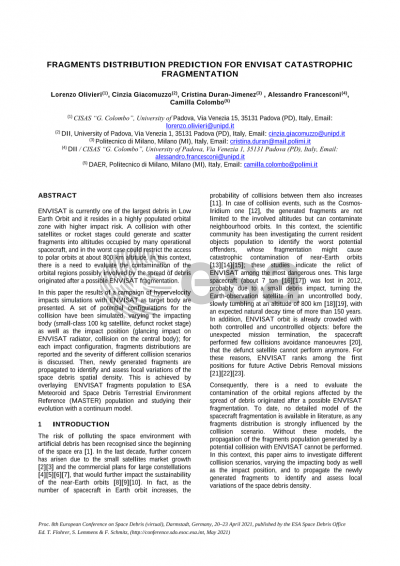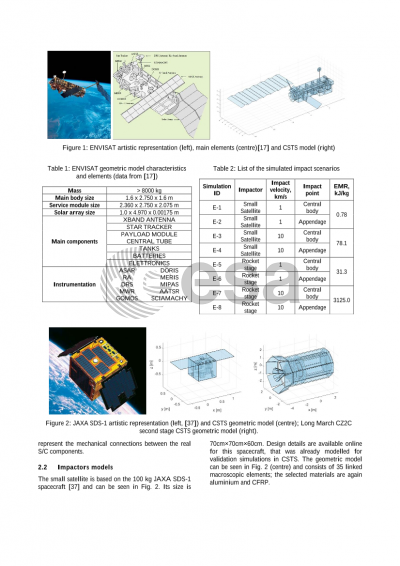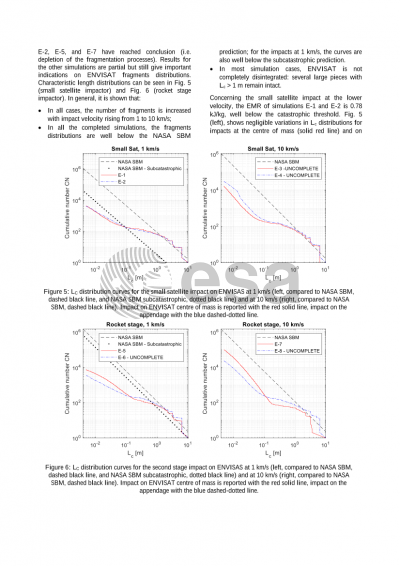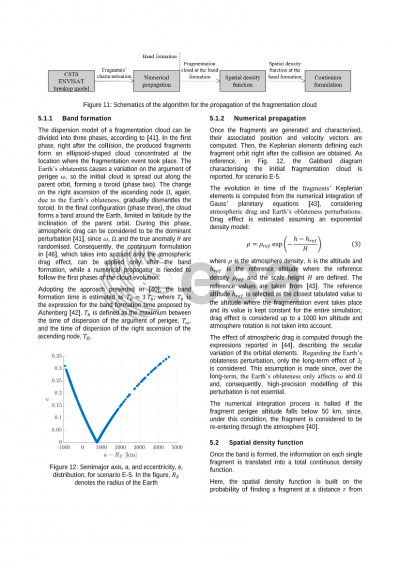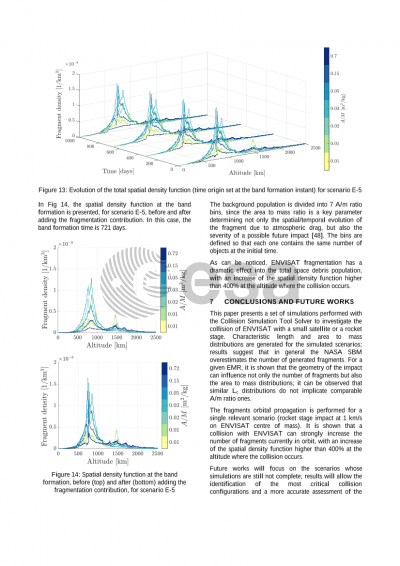Document details

Abstract
The unexpected mission termination of ENVISAT in 2012 created a novel hazard in the already critical LEO debris environment: the significant mass (more than 7 tons) and the long natural decaying time (more than 150 years) makes ENVISAT up to now one of the largest and most dangerous debris in LEO. In fact, a collision would generate and scatter fragments into altitudes occupied by many operational satellites, and in the worst cases could restrict the access to polar orbits at about 800 km of altitudes.
Simulating collisions with ENVISAT helps in the evaluation of the risk for the involved altitudes as well as for potential debris distribution to other orbits; the generation of realistic fragment distributions would remarkably increase the accuracy of predictive models for the evolution of space debris environment.
In this paper the results of a campaign of hypervelocity impacts simulations with ENVISAT as target body are presented. Simulations were performed with a new tool, called CSTS, developed in the framework of the ESA contract “Numerical simulations for spacecraft catastrophic disruption analysis”. The key features of CSTS are the capability of modelling a large variety of collision scenarios involving complex systems such as entire satellites and the possibility to provide statistically accurate results with a computational effort orders of magnitude lower than hydrocodes. For this study, an accurate model of ENVISAT has been defined with CSTS, with many design details included. A set of potential configurations for the collision have been simulated, varying the impacting body (small-class 100 kg satellite, defunct rocket stage) as well as the impact position (glancing impact on ENVISAT radiator, collision on the central body); for each impact configuration, fragments distributions are reported and the severity of different collision scenarios is discussed. Then, newly generated fragments are propagated in order to identify and assess local variations of the space debris density. This is achieved by adding ENVISAT fragments population to ESA Meteoroid and Space Debris Terrestrial Environment Reference (MASTER) one. For each simulated configuration, local distribution peaks are detected and the general deterioration trend of the space debris environment is discussed.
Preview
